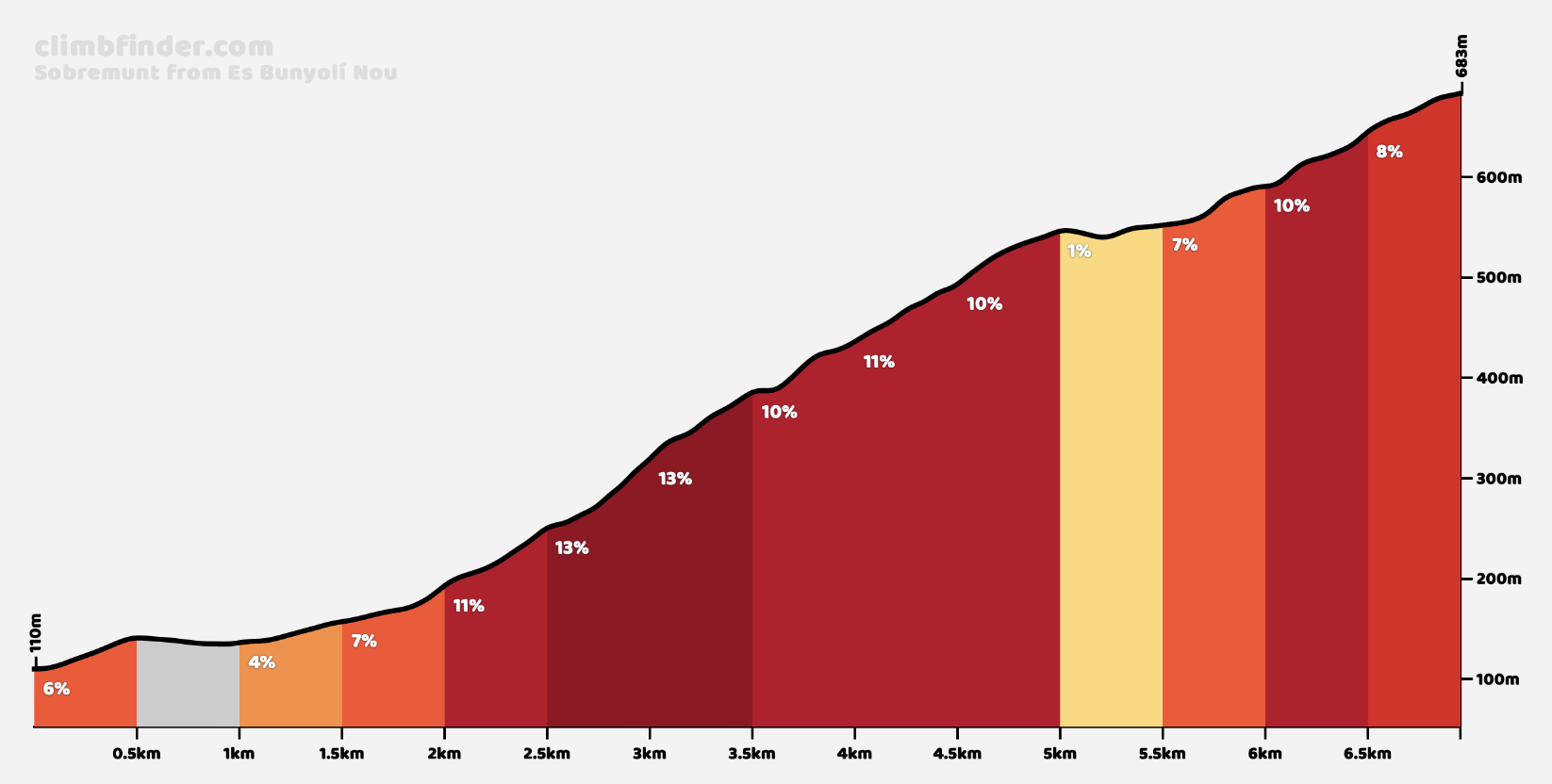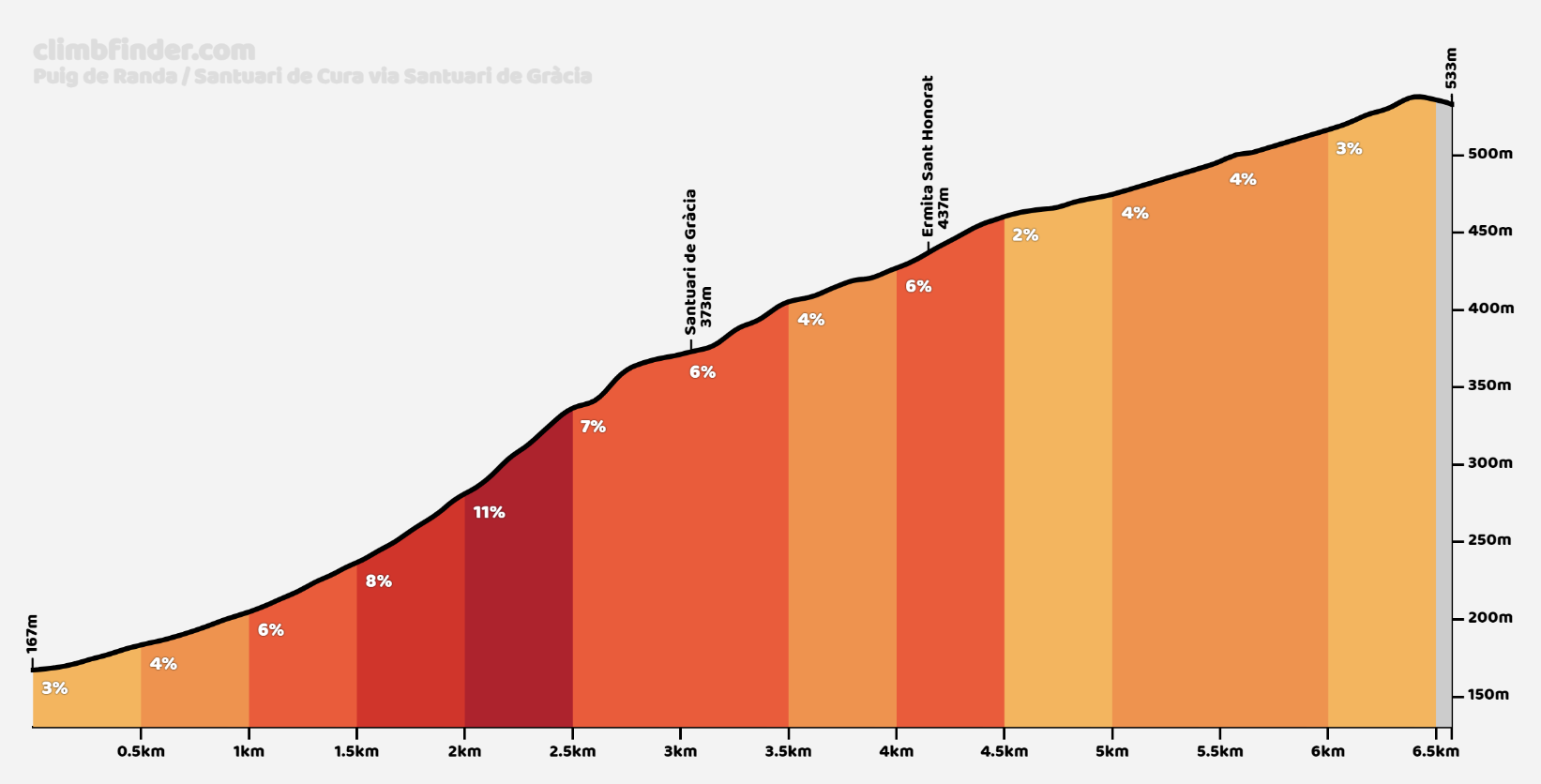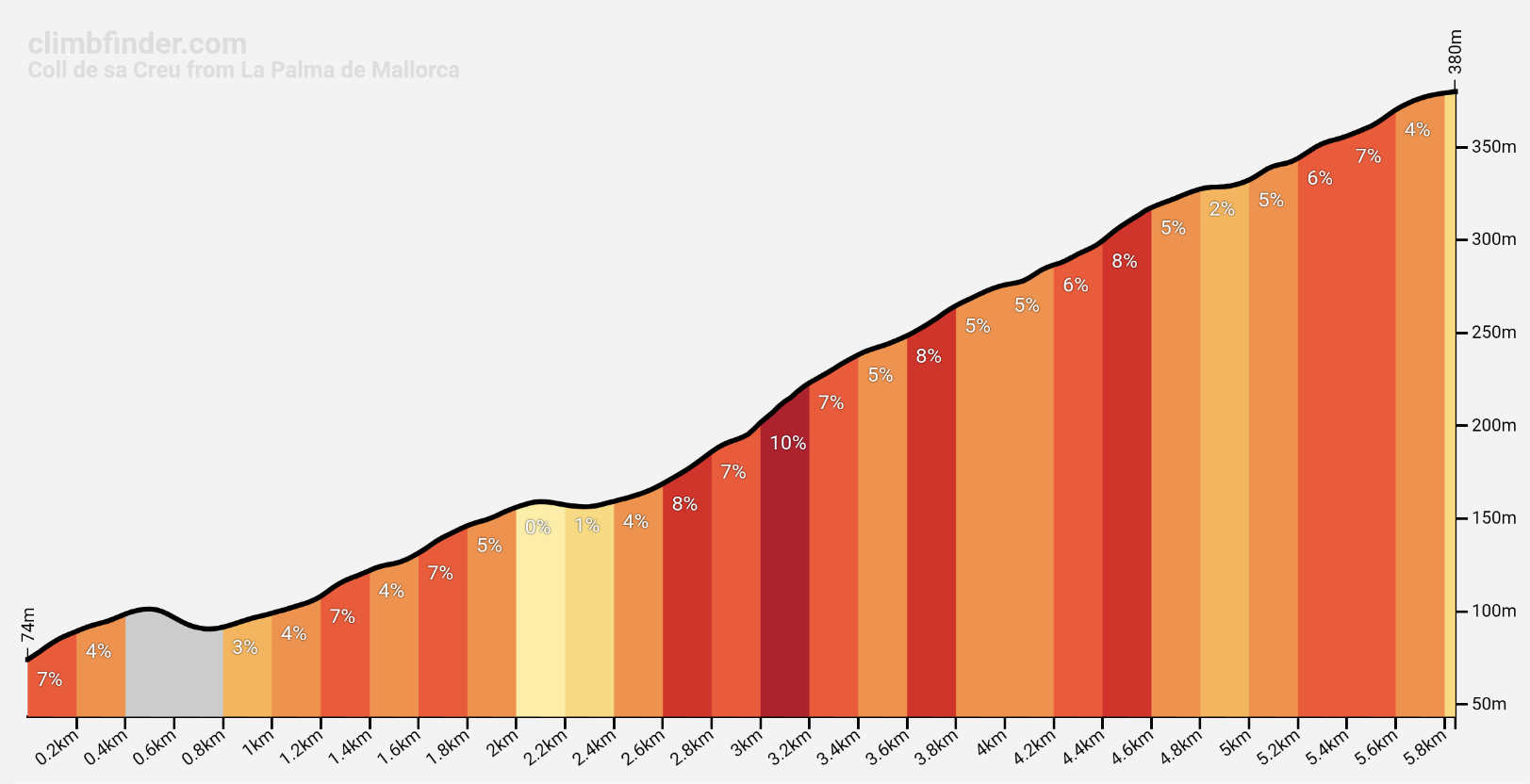Wat maakt deze week zo bijzonder?
1. Clinic op Randa Cura: We beginnen de week met een klim & daal-clinic op Randa Cura.
Je ontvangt deskundige tips en technieken om je klimvaardigheden te verbeteren, terwijl je geniet van het prachtige landschap.
2. Sa Calobra en Sobremunt: Ga de uitdaging van de Sobremunt aan, de beruchste en steilste klim van Mallorca.
En ook de iconische beklimming Sa Calobra staat natuurlijk op het programma.
Deze móet je beklimmen als je op Mallorca bent. Een prachtige klim met een van de mooiste uitzichten van Mallorca.
3. Puig Major Beklimming – Top: Het hoogtepunt van onze Klimweek is de epische beklimming van de Puig Major.
Maar hier wordt het pas echt uniek, – we hebben speciaal voor jou een getimede Puig Major-dag op zaterdag tijdens jouw deelname aan het evenement La Pérez.
Normaal kun je tot 800 meter hoogte klimmen, maar tijdens dit event kun je doorgaan tot de echte top naar ruim 1400 meter hoogte.





